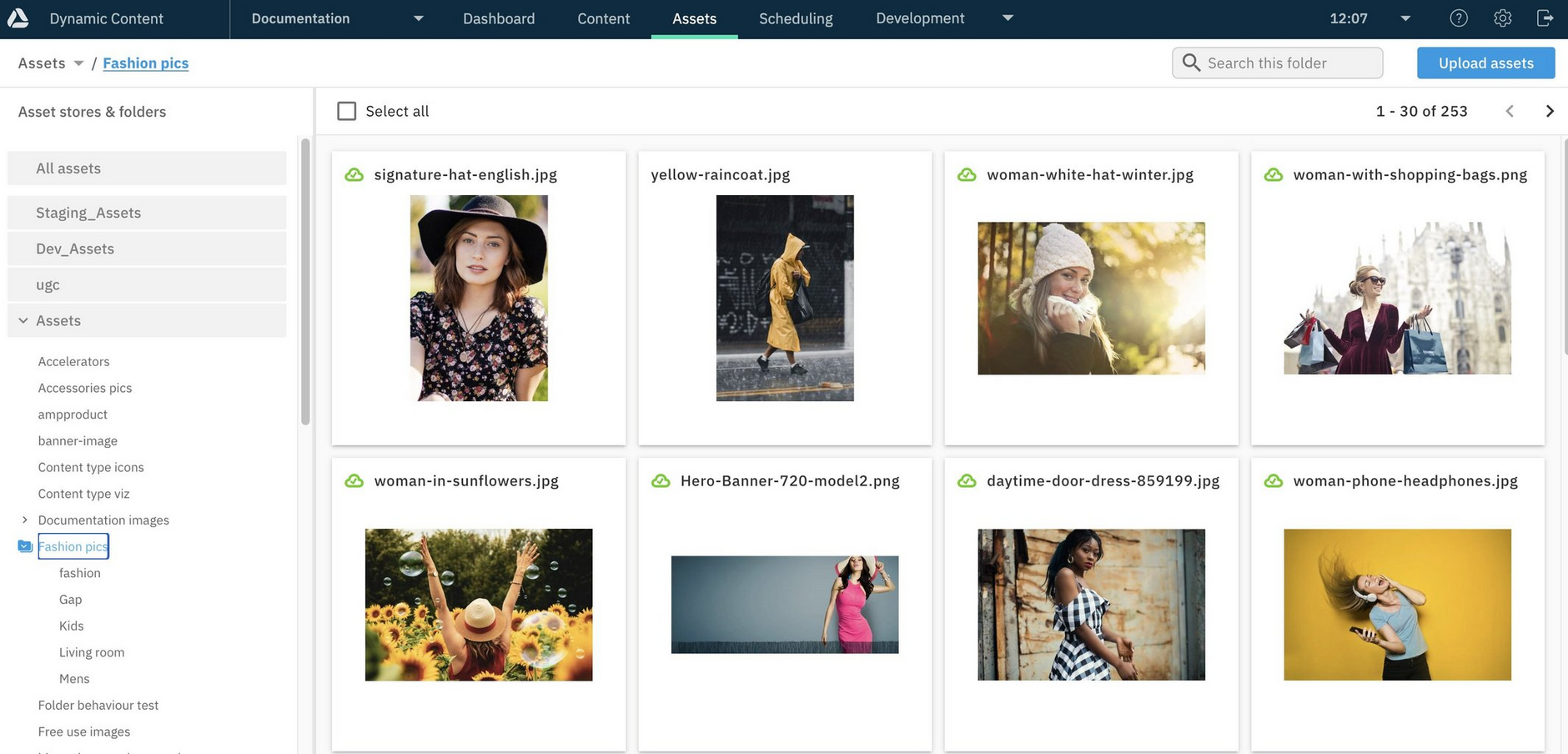The Assets tab
The Dynamic Content Assets tab streamlines your content production workflow by allowing you to quickly perform some key asset management tasks without the need to switch to Content hub. Using the Assets tab you can easily access the Asset Library to perform tasks such as uploading and publishing assets.
The Assets tab brings key asset management features into Dynamic Content for content producers. To use the complete range of asset management features you are required to use Content Hub. For more information, see Limitations at the end of this page.
Using the Assets tabLink copied!
The Assets tab enables you to do the following asset management tasks from within Dynamic Content:
- Upload and publish assets, with the option to publish on upload
- Copy filenames to the clipboard
- Create sub folders
- Search for assets in the currently selected folder. Note, in addition to the asset label that is displayed on the screen, the search considers other text associated with an asset. This means you may see assets in the search results whose labels don’t match your search text. You can find all the fields and associated text for each asset in Content Hub. For tips about how to search for assets, follow the same rules as used for searching in Content Hub.
Managing the Assets tabLink copied!
In order to use the features of the Assets tab to upload, organize and publish assets from Dynamic Content, it must first be provisioned on your account. The Assets tab is only available if you are using Content Hub to manage your assets.
To get the Assets tab provisioned, you should contact your Customer Success Manager or send an email to Amplience support. Your account administrator should make the request because the Assets tab is enabled on a per hub basis, not per user.
Assets tab provisioning optionsLink copied!
Your Dynamic Content users require permission to access asset stores and assets through the Assets tab. You will need to choose from the following two permissions options when requesting the Assets tab:
Give all users on the hub the same access (API key access)Link copied!
If you choose this option, then all the users will get the same access but they will only see asset stores that have been set up for the hub.
This option is the one to choose if you want your users to upload, view and publish all assets available to your hub.
Use existing Content Hub access for each userLink copied!
If you choose this option, each user's access to the Assets tab features will mirror their existing Content Hub access. For example this may include restricting access to certain asset stores.
If you have multiple brands and keep assets for each brand in different asset stores, then you may want to choose this option to restrict which asset stores a user can access.
LimitationsLink copied!
The Assets tab introduces a subset of key asset management features into Dynamic Content. To access the complete range of asset management tasks, use Content Hub. For example, to move, delete or look at the properties of an asset you need to use Content Hub.
The following limitations apply to the Assets tab:
Distinguishing between published assets and latest published assetsLink copied!
Once an asset has been published, the icon always shows the green cloud with a tick. If you subsequently change the image, the icon does not update to identify that the published version isn't the most recent. If you are unsure whether you are looking at the latest published version of an asset, check the published status icon in Content Hub.
Deleting sub foldersLink copied!
You can create subfolders, but to delete them you must use Content Hub.
Uploading large filesLink copied!
When uploading large files you may experience a slight delay from when you click to start the upload to when the upload commences. When the upload commences, the 'upload in progress message' is displayed.
Uploading using drag and drop from FirefoxLink copied!
The drag and drop method for uploading files from a Firefox browser is not operational.
